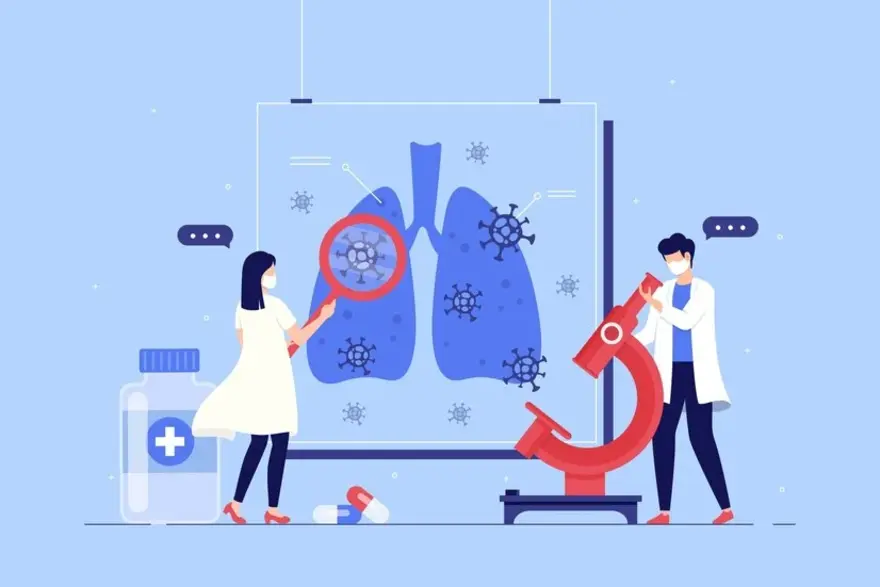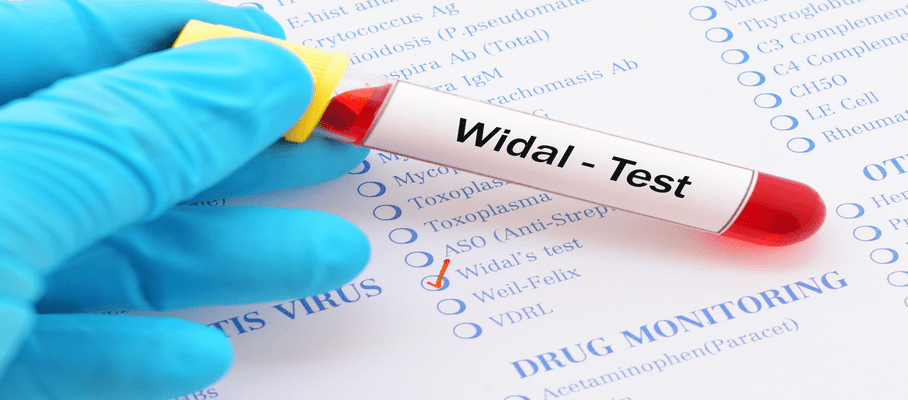Preventive Healthcare
Interstitial Lung Disease: A Guide to Symptoms, Diagnosis, and Treatment

Table of Contents
- What is interstitial lung disease?
- What happens when you have interstitial lung disease?
- What are types of interstitial lung disease?
- What's the difference between interstitial lung disease and pulmonary fibrosis?
- Who is most at risk for interstitial lung disease?
- How serious is interstitial lung disease?
- What are the symptoms of interstitial lung disease?
- What causes interstitial lung disease?
- Known causes of interstitial lung disease
- Unknown causes of interstitial lung disease
- How is interstitial lung disease diagnosed?
- What tests will be done to diagnose interstitial lung disease?
- How is interstitial lung disease treated?
- What medications and treatments are used in interstitial lung disease?
- How can we prevent interstitial lung disease?
- What is the outlook for interstitial lung disease?
- What are the complications of interstitial lung disease?
- What is the life expectancy of a person with interstitial lung disease?
- How do I take care of myself with interstitial lung disease?
- When to see a doctor for interstitial lung disease?
- Conclusion
What is interstitial lung disease?
Interstitial lung disease is an umbrella term for a large group of chronic lung disorders characterised by inflammation and scarring (fibrosis) of the lungs. This scarring occurs in the interstitium, the delicate lace-like network of tissue that supports the lungs' tiny air sacs (alveoli). As this tissue becomes stiff and thickened, the lungs lose their elasticity, making it difficult to breathe and for oxygen to enter the bloodstream.
What happens when you have interstitial lung disease?
When you have ILD, the progressive scarring and inflammation in your lungs make them stiff and less elastic. This means:
-
Lungs fail to expand during inhalation.
-
Damaged air sacs limit oxygen transfer.
-
Breathing becomes difficult, even at rest.
-
Shortness of breath during daily tasks
-
Lung damage worsens over time.
-
Treatment and lifestyle changes can slow progression.
What are types of interstitial lung disease?
There are over 200 different types of interstitial lung disease, which are classified based on their cause (if known). Some common types include:
-
Idiopathic pulmonary fibrosis (IPF): Scarring with unknown cause
-
Hypersensitivity pneumonitis: Caused by inhaling dust, mould, or chemicals
-
Sarcoidosis: Inflammatory disease affecting multiple organs
-
Connective tissue disease-associated ILDs: Linked to autoimmune disorders like rheumatoid arthritis, scleroderma
What's the difference between interstitial lung disease and pulmonary fibrosis?
Pulmonary fibrosis is a type of interstitial lung disease characterised specifically by scarring (fibrosis) of the lung tissue. In contrast, the term ILD also includes lung diseases marked mainly by inflammation with little or no fibrosis.
Who is most at risk for interstitial lung disease?
While anyone can develop ILD, some factors increase your risk:
-
Exposure to hazardous materials like asbestos, silica, coal dust, and grain dust
-
Smoking cigarettes, especially combined with other risk factors
-
Receiving radiation therapy to the chest
-
Taking certain medications (chemotherapy drugs, heart medications, some antibiotics)
-
Having an autoimmune disorder like rheumatoid arthritis, scleroderma, or Sjogren's syndrome
-
Genetic predisposition—some types of ILD run in families.
How serious is interstitial lung disease?
ILD is a serious condition that affects quality of life, causing increasing breathlessness that can make daily activities difficult. Some individuals may require supplemental oxygen, and severe untreated cases can result in complications like pulmonary hypertension, respiratory failure, and heart failure. However, with treatment, many people can manage symptoms and slow disease progression.
What are the symptoms of interstitial lung disease?
The main symptoms of interstitial lung disease are:
-
Shortness of breath, especially with exertion
-
Dry, hacking cough
-
Fatigue and weakness
-
Chest discomfort or tightness
-
Loss of appetite and weight loss
-
Mild symptoms initially, worsening with lung damage
-
Some ILDs, like sarcoidosis, cause skin rashes, joint pain, and eye inflammation.
What causes interstitial lung disease?
Interstitial lung disease causes can be divided into known and unknown. Known causes include:
-
Autoimmune disorders like rheumatoid arthritis, scleroderma, dermatomyositis, Sjogren's syndrome, etc.
-
Exposure to hazardous materials like asbestos, silica, coal dust, grain dust, and bird droppings
-
Certain medications, including chemotherapy drugs, some antibiotics, and heart medications
-
Radiation therapy to the chest
Known causes of interstitial lung disease
Known causes of ILD include:
- Autoimmune diseases (rheumatoid arthritis, scleroderma)
- Exposure to asbestos, silica, coal dust, and other hazardous materials
- Certain medications (sulfonamides, bleomycin)
- Radiation therapy
- Chronic exposure to organic substances like bird droppings or moulds is also a known cause.
Unknown causes of interstitial lung disease
In cases where a cause can't be identified, the condition is called idiopathic interstitial lung disease. Idiopathic pulmonary fibrosis is the most common type, accounting for 20-30% of all ILD cases. Experts believe IPF may result from a combination of genetic and environmental factors.
How is interstitial lung disease diagnosed?
Diagnosing ILD involves a thorough evaluation:
- Medical history review, including family history and exposure to hazardous materials
- Physical exam to check for crackling sounds (rales) in the lungs and clubbing of the fingers
- Imaging tests like chest X-ray and high-resolution CT scan to visualise lung damage
- Pulmonary function tests to measure how well your lungs work
- Blood tests to check for autoimmune diseases, infections, and genetic disorders
- Bronchoscopy to view the airways and take fluid/tissue samples
- Surgical lung biopsy for a definitive diagnosis in some cases
What tests will be done to diagnose interstitial lung disease?
To diagnose ILD, your doctor may order the following interstitial lung disease radiology and other tests:
- Chest X-ray: Often the first imaging test, it can show lung scarring and rule out other diseases.
- High-resolution CT (HRCT) scan: Provides detailed cross-sectional images of the lungs to assess type and extent of damage.
- Pulmonary function tests (PFTs): Non-invasive tests to measure lung volumes, airflow, and gas exchange. Includes spirometry and diffusion capacity.
- Exercise testing: Measures lung function during physical activity, often using a 6-minute walk test.
- Bronchoscopy with bronchoalveolar lavage: A thin, flexible tube is inserted through the nose or mouth into the lungs to obtain fluid/tissue samples.
- Video-assisted thoracoscopic surgery (VATS): A minimally invasive procedure to remove small samples of lung tissue for biopsy.
- Blood tests: To look for signs of autoimmune disease, infections, and genetic disorders associated with ILD.
How is interstitial lung disease treated?
Interstitial lung disease treatment aims to preserve lung function, relieve symptoms, and improve quality of life. Treatment is tailored to the specific type of ILD and may include medications to reduce inflammation and scarring, pulmonary rehabilitation, supplemental oxygen, and, in severe cases, lung transplantation.
What medications and treatments are used in interstitial lung disease?
Medication for interstitial lung disease may include:
-
Corticosteroids: Prednisone is often prescribed to reduce lung inflammation.
-
Immunosuppressants: Drugs like mycophenolate, azathioprine, and cyclophosphamide help suppress the immune system.
-
Antifibrotic agents: Nintedanib and pirfenidone can slow the progression of idiopathic pulmonary fibrosis.
-
Antacid therapy: Treats acid reflux, which can worsen ILD.
Other treatments:
-
Pulmonary rehabilitation: Supervised exercise and breathing techniques to improve lung function and reduce breathlessness.
-
Supplemental oxygen: Used as needed to maintain healthy blood oxygen levels.
-
Lung transplant surgery may be an option for some people with severe ILD not responding to other treatments.
How can we prevent interstitial lung disease?
While not all cases of ILD are preventable, you can reduce your risk by:
- Avoid smoking and secondhand smoke to prevent lung damage.
- Minimise exposure to environmental toxins (wear protective gear if needed).
- Check your home for mould, asbestos, and other contaminants.
- Treat chronic heartburn to reduce lung inflammation.
- Stay current with flu and pneumonia vaccinations.
- Manage autoimmune disorders with your doctor.
- Get early screening if there's a family history of ILD.
What is the outlook for interstitial lung disease?
The interstitial lung disease life expectancy varies depending on the specific type and severity. Some forms of ILD, like sarcoidosis, may stabilise or even improve with treatment. Others, like idiopathic pulmonary fibrosis, tend to worsen over time despite treatment.
In general, the prognosis is better when ILD is diagnosed and treated early, before extensive scarring occurs. Staying actively involved in your treatment, following a healthy lifestyle, and promptly reporting any new symptoms to your doctor can help you maintain the best possible quality of life.
What are the complications of interstitial lung disease?
Potential complications of ILD include:
-
High blood pressure in the lungs (pulmonary hypertension)
-
Right-sided heart failure (cor pulmonale)
-
Respiratory failure
-
Increased risk of infections like pneumonia
What is the life expectancy of a person with interstitial lung disease?
Interstitial lung disease life expectancy ranges from 2-5 years after diagnosis on average but varies widely depending on the type of ILD:
-
Idiopathic pulmonary fibrosis: Median survival 3-5 years; some live longer.
-
Sarcoidosis: 90% survive >10 years, often remits.
-
Hypersensitivity pneumonitis: Trigger removal may halt progression; severe cases need transplants.
-
Prognosis affected by age, health, severity
-
Early diagnosis and treatment improve outcomes.
How do I take care of myself with interstitial lung disease?
In addition to following your treatment plan, you can take steps to feel your best with ILD:
-
Pace yourself and take breaks.
-
Maintain a healthy weight for easier breathing.
-
Eat a balanced diet with fruits, veggies, and lean protein.
-
Stay current with flu and pneumonia vaccines.
-
Avoid smoke, dust, and lung irritants.
-
Join a support group for encouragement.
When to see a doctor for interstitial lung disease?
See your doctor promptly if you experience:
-
Worsening breathlessness or cough
-
Chest pain or palpitations
-
Unintended weight loss
-
Fatigue that disrupts daily activities
-
Any new or concerning symptoms
Conclusion
Living with interstitial lung disease can be challenging, but with the right knowledge and support, you can effectively manage your condition and improve your quality of life. Remember to work closely with your healthcare team, follow your treatment plan, and adopt healthy lifestyle habits. If you need reliable diagnostic services, consider Metropolis Healthcare, a leading chain of diagnostic labs across India committed to delivering accurate results and personalised care to help you prioritise your health.


























